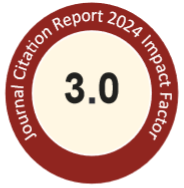Abstract
We evaluated the number and types of particles in glycyrrhizin injections after ampoule cutting. A total of 100 glass ampoules of 5 companies were examined. The mean number of particles with diameter of 1.3- < 5 μm was 252.9/mL, and that of particles with diameter of 5- < 10 μm was 12.5/mL. The number of particles differed among products of the 5 companies, e.g., the number of particles with a diameter of 1.3- < 5 μm varied from 351.9/mL to 121.6/mL. In addition, a total of 120 plastic ampoules from 6 companies were evaluated. The mean number of particles with a diameter of 1.3- < 5 μm was 43.0/mL, and that of particles with a diameter of 5- <10 μm was 2.1/mL. Differences among products of the 6 companies were not significant. The number of particles in glycyrrhizin injections after ampoule cutting was significantly lower in plastic than for glass ampoules (p < 0.0001). Scanning electron microscopy and X-ray microanalysis identified glass fragments in glycyrrhizin injection samples after the cutting of glass ampoules but identified no particles after cutting plastic ampoules. Glycyrrhizin injections are commonly used in Asia including Japan, Taiwan, and China. The use of plastic ampoules is recommended for the prevention of the entry of glass fragments into the body.
Recommended Citation
Yorioka, K.; Oie, S.; and Kamiya, A.
(2009)
"Comparison of particulate contamination in glass and plastic ampoules of glycyrrhizin injections after ampoule cutting,"
Journal of Food and Drug Analysis: Vol. 17
:
Iss.
3
, Article 3.
Available at: https://doi.org/10.38212/2224-6614.2606

